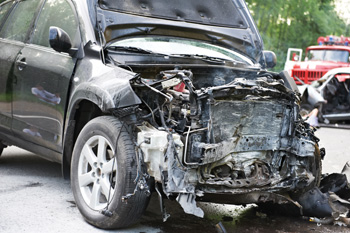 Are you still processing total losses for free? If you are, listen up – because the insurance industry is once again taking advantage of you!
Are you still processing total losses for free? If you are, listen up – because the insurance industry is once again taking advantage of you!
The Collision Capital
My shop was located in the most competitive city in the country for collision: Livonia, Mich., a suburb of Detroit. What made it so competitive? First, Progressive opened its first concierge center there. Plus, one of the largest Allstate-owned collision centers, Sterling, is located in Livonia, not to mention Collex Collision, a strong multi-shop operator. Finally, there are several independent and dealership collision centers. Oh, and of course, everyone’s brother-in-law is a collision tech, too!
Detroit and the surrounding areas have the highest rate of unemployment, foreclosures, repossessed vehicles and uninsured vehicles (more than 34 percent). The labor rate in Detroit and the surrounding suburbs is among the lowest in the country, and we have more shops per capita than anywhere in the world.
To survive and thrive here, we have to be very smart, work extra hard, and be creative with what we can charge for and how to get paid for it. One of the biggest challenges we face in our industry is the rising number of total loss vehicles. These total losses are a huge drain on our resources, with little to no profit.
DRP vs. Non-DRP
If you participate in a DRP agreement, and a customer is referred to you by that insurer, the following does not apply. However, when a non-DRP vehicle gets towed into your facility and becomes a total loss, there is a huge opportunity for profit.
Over the years (and after multiple beatings by the insurance company-driven DRP “agreements”), we all forgot a simple fact: When a non-DRP customer chooses us to repair their vehicle and signs a repair order, the vehicle is ours, not the insurer’s. Do not ever forget this – ever again! What this allows us to do as businesspeople and capitalists is charge what the market will bear for our service. The rule in my shop’s office was that if the adjuster wasn’t adjusting our price down, we weren’t charging enough.
Before I explain the pricing structure, I need to clear up a few statements you’ll likely hear from the insurers. They’ll try to tell you the charges are illegal, but they’re not. We’re simply charging for our time, overhead and a small profit. Also, be prepared for this popular line: “The shop down the street doesn’t charge for this.” Well, they’re probably right about that, but they’re in your shop! My favorite one was, “You’re gouging us, and that’s not right.” I always enjoyed lessons on ethics from the insurance industry.
What I Got Paid For
Now, let’s take a look at the facts. I charged for the following and got paid:
- Estimate fee – How much time do you spend on a detailed 142-line estimate? Write down the steps.
- Processing fee – How much time do you spend processing a total, including finding a place to put it when it arrives at your shop, moving other vehicles, generating a check or PO for the towing company and creating a customer file? Think it through; write down the steps.
- Total loss fee – How much profit are you losing on vehicles that don’t get repaired because their salvage value is too high? Suddenly, it’s more cost effective for the insurance company to total the vehicle, cash out the customer and recover at least 35 percent back on salvage. And what does the shop get? Nothing. Are you mad yet?
- Storage – This is the only fee insurance companies are willing to pay, granted at a Third World rate. Think it through; write down what the space on your lot costs you per day.
- Towing – If you’re not marking up tow bills, you need to be; it’s another missed profit-producing opportunity.
- Securing the vehicle – What does it cost, for example, to keep rain and snow out of a vehicle that has missing body parts or glass?
- Customer follow-up – How much time do you spend communicating with customers, packing up their personal belongings, pulling off the rusty license plate, and getting into the trunk to get their kids’ subwoofers out?
No More Free Work
Why are we expected to do all of this work and more for free? I know, it’s not about the insurance carrier, it’s about the customer. But if you’re not profiting on every ethical opportunity, your business will no longer be around to serve your customer!
With that being said, are you going to get paid every time? No. Be prepared for the insurance companies to push back, as they will not just open up their checkbooks without an explanation. Have a detailed cost breakdown, along with a strong sales plan, as to why they should pay you. After all, what do you have to lose? Remember that insurers, despite what they say, are not your “partners.” You’re not getting paid now, you don’t have a DRP contract and it’s a free market – despite what the insurance carrier wants you to believe.
Basil Fernimos owned his own collision and auto repair centers for more than 25 years and retired at 44. He’s a master ASE-certified collision technician, I-CAR Platinum technician, state of Michigan certified technician and state of Michigan collision certified technician. He’s also a marketing, sales and business development expert as well as a public speaker. He can be reached at [email protected].













